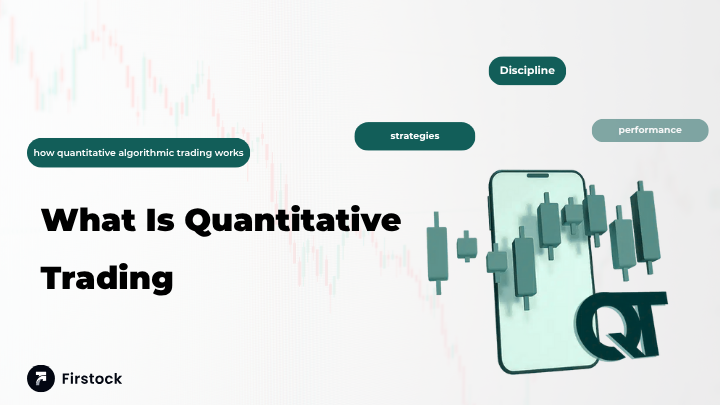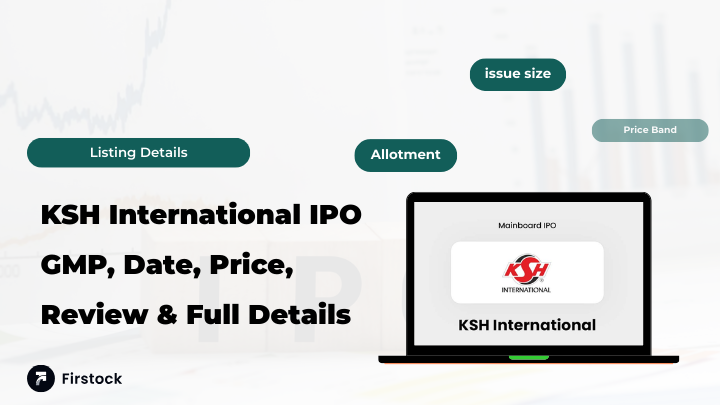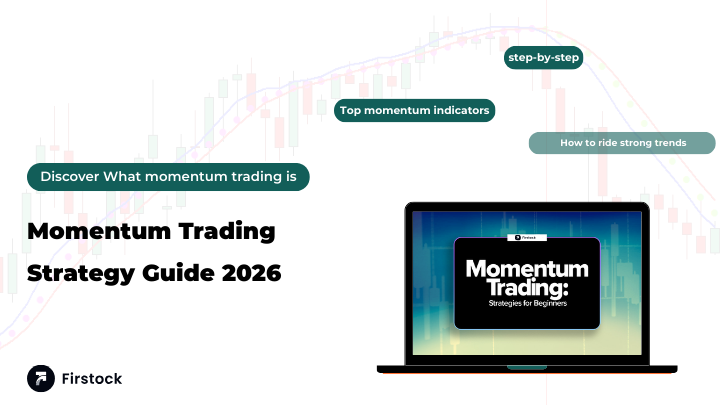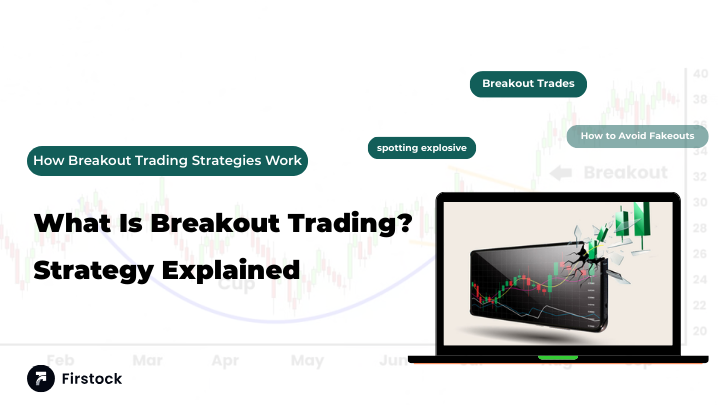What Is Quantitative Trading? | Quantitative Algo Trading

What Is Quantitative Trading? A Complete Guide to Data-Driven Investing with Firstock
Have you ever imagined trading the stock market without emotions, where every decision is backed by logic, mathematics, and data? That’s exactly what quantitative trading is all about.
In today’s fast-paced financial world, success isn’t just about instincts—it’s about insights. Quantitative trading uses data and algorithms to make precise, emotion-free decisions. With platforms like Firstock, traders in India can now access advanced quantitative algorithmic trading tools that were once reserved for big institutions.
If traditional trading is like playing chess by feeling, quantitative trading is like playing chess with a supercomputer that analyzes every possible move before making one.
In this article, we’ll break down what is quantitative trading, how it works, the top quantitative trading strategies, and how Firstock helps traders execute these strategies efficiently.
What Is Quantitative Trading?
Quantitative trading is a trading technique that involves mathematical and statistical models to determine trading opportunities. Quant traders rely on data-driven algorithms to make trading decisions, rather than relying on human intuition or market rumors.
In simple terms, it’s trading powered by data, not emotions.
For instance, instead of guessing when to buy or sell, a quant trader uses an algorithm that analyzes thousands of data points to detect profitable opportunities automatically.
The Core Concept of Quantitative Trading
The foundation of quantitative trading lies in pattern recognition. Traders collect large volumes of historical data — like stock prices, trading volumes, volatility, and more — and use statistical methods to find recurring trends or inefficiencies.
The goal? To identify patterns that predict future market behavior with a high probability of success.
How Quantitative Trading Works
Let’s simplify how it all happens behind the scenes:
- Data Collection: Gather financial market data — prices, indicators, and historical movements.
- Strategy Development: Build mathematical models that identify profitable signals.
- Backtesting: Test the strategy on past market data to measure performance.
- Execution: Deploy the algorithm using a trading platform like Firstock, which executes trades automatically.
- Monitoring & Optimization: Continuously monitor performance and refine strategies for better accuracy.
This automated process ensures trades are executed quickly, efficiently, and without emotional bias.
Key Components of a Quantitative Trading System
A robust quantitative trading system has four key elements:
- Data: The raw material — reliable, accurate market data.
- Models: Mathematical frameworks that identify trading signals.
- Technology: Fast systems like Firstock’s advanced API, which allows automated trade execution.
- Risk Management: Systems to minimize losses and protect capital.
Each component must work in perfect sync — much like an orchestra where every instrument plays in harmony.
Quantitative Trading vs Traditional Trading
Quantitative trading provides structure, discipline, and precision, whereas traditional trading can be inconsistent and emotional.
Popular Quantitative Trading Strategies
There are many ways to apply quantitative algorithmic trading. Below are the most commonly used strategies:
1. Mean Reversion
Assumes that asset prices will return to their average value over time. Traders buy undervalued assets and sell overvalued ones.
2. Momentum Trading
This strategy follows the trend — if a stock is moving up, it’s likely to keep going up for a while.
3. Statistical Arbitrage
Takes advantage of temporary price differences between related securities.
4. Market Making
Provides liquidity by placing both buy and sell orders simultaneously to earn the bid-ask spread.
5. Pairs Trading
Buys one asset and sells another when a historical relationship between their prices diverges.
6. High-Frequency Trading (HFT)
Uses ultra-fast algorithms to execute thousands of trades in milliseconds.
Platforms like Firstock - discount broker in India make it easier for traders to deploy these strategies through their API-based algorithmic trading infrastructure, offering reliability and speed.
The Role of Algorithms and Data
Algorithms are the decision-makers in the quantitative algorithmic trading. They process large volumes of data at the time and recognize trading opportunities within the microseconds.
In the meantime, data science develops these algorithms with the help of machine learning and predictive analytics - make strategies more accurate and flexible.
Consider algorithms to be the brain, and the data to be the fuel of quantitative trading.
Why Platforms Like Firstock Are Revolutionizing Quantitative Trading
Firstock is one of India’s emerging platforms that empowers traders to automate their strategies. It provides:
- Advanced APIs for algorithmic trading.
- Low-latency execution — crucial for quantitative strategies.
- Seamless integration with Python, TradingView, or Excel for custom-built models.
- User-friendly dashboards to monitor strategies in real-time.
Whether you’re a beginner exploring quantitative trading or an experienced algo trader, Firstock bridges the gap between complex strategy development and effortless automation.
Benefits of Quantitative Trading
- Emotion-Free Trading: Purely data-driven decisions.
- Backtesting Capability: Validate strategies before going live.
- Speed and Efficiency: Trades executed in milliseconds.
- Diversification: Manage multiple markets and strategies simultaneously.
- Consistency: Same logic applied every time — no emotional deviations.
Risks and Challenges
While powerful, quantitative trading does come with risks:
- Overfitting: Models may perform well in backtesting but fail in live markets.
- Data Errors: Incorrect or outdated data can distort results.
- Technical Failures: Connectivity or coding issues can disrupt execution.
- Market Volatility: Unexpected events can render models temporarily ineffective.
Proper testing and real-time monitoring — features supported by Firstock’s trading interface — can help minimize these risks.
Quantitative Trading in the Real World
The leading companies such as Renaissance Technologies, Two Sigma, and Goldman Sachs are dependent on quantitative models. However, with such platforms as Firstock, such methods of an institutional level can now be obtained by retail traders in India.
Quantitative algorithmic trading is being democratized to alter the way individuals invest and anyone can construct, test and implement strategies automatically.
How to Start Quantitative Trading with Firstock
Here’s how you can begin your journey:
- Create an Account on Firstock.in.
- Access the API Dashboard for algorithmic trading setup.
- Connect Your Strategy using Python, TradingView, or other tools.
- Backtest Your Model using historical market data.
- Go Live and monitor performance through real-time analytics.
With its intuitive interface and powerful infrastructure, Firstock is ideal for traders who want to move from manual to automated, data-driven investing.
The Future of Quantitative Algorithmic Trading
Quantitative algorithmic trading is a fast developing bright future. It is a time where models are becoming smarter and more adaptive with the improvement in AI, big data, and cloud computing.
Such platforms as Firstock are spearheading this change in India, allowing retail and professional traders to make use of the latest technology to earn steady, systematic returns.
Conclusion
What is quantitative trading then?
It is the art and science of smarter trading with the use of data, algorithms, and logic.
Quantitative trading provides traders with the level of consistency, discipline, and competitive advantage by removing emotions and automating trading strategies.
Due to the existence of such websites as Firstock, now everyone, whether an amateur or a professional trader, can get acquainted with the world of quantitative algorithmic trading and feel the future of intelligent investing.
FAQs
1. What is quantitative trading in simple terms?
It’s trading based on data and mathematical models instead of guesswork or emotions.
2. How does Firstock support quantitative trading?
Firstock provides APIs, low-latency execution, and integration tools for algorithmic and quantitative trading strategies.
3. Do I need coding skills to use Firstock for quant trading?
Basic knowledge of Python or TradingView scripting helps, but Firstock’s intuitive interface makes it accessible even for beginners.
4. Is quantitative trading risk-free?
No — like all trading methods, it carries risk. However, with strong backtesting and risk management, risks can be minimized.
5. Can individual traders in India use quantitative trading?
Yes! Platforms like Firstock have made quantitative and algorithmic trading accessible for retail traders across India.





